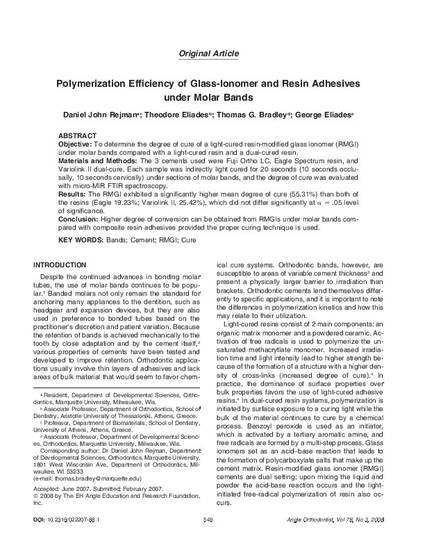
Objective: To determine the degree of cure of a light-cured resin-modified glass ionomer (RMGI) under molar bands compared with a light-cured resin and a dual-cured resin.
Materials and Methods: The 3 cements used were Fuji Ortho LC, Eagle Spectrum resin, and Variolink II dual-cure. Each sample was indirectly light cured for 20 seconds (10 seconds occlusally, 10 seconds cervically) under sections of molar bands, and the degree of cure was evaluated with micro-MIR FTIR spectroscopy.
Results: The RMGI exhibited a significantly higher mean degree of cure (55.31%) than both of the resins (Eagle 19.23%; Variolink II, 25.42%), which did not differ significantly at α = .05 level of significance.
Conclusion: Higher degree of conversion can be obtained from RMGIs under molar bands compared with composite resin adhesives provided the proper curing technique is used.
Available at: http://works.bepress.com/t_bradley/3/

Published version. The Angle Orthodontist, Vol. 78, No. 3 (May 2008): 549-552. DOI. © 2008 The E. H. Angle Education and Research Foundation, Inc. Used with permission.